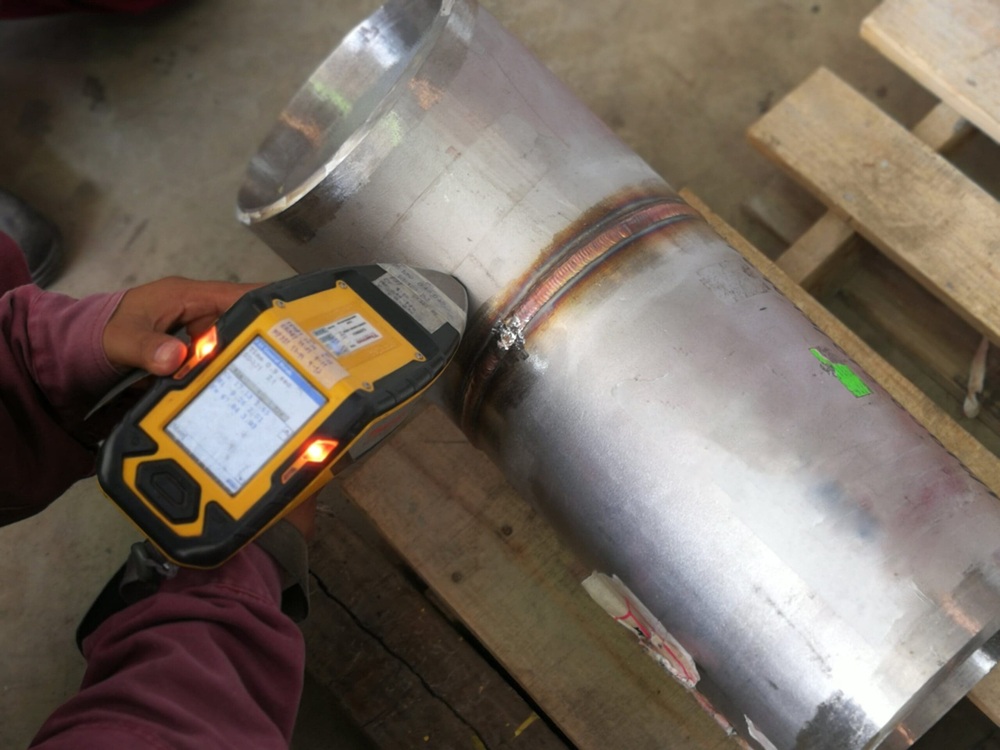Have you ever received a metal part that looked right on paper but felt wrong in use? That can happen. That is why PMI testing is important in fields like oil and gas, power, and manufacturing.
What is PMI Testing?
PMI stands for Positive Material Identification.
It is a way to check metal grade and alloy mix. The test happens on site and does not cut or harm the piece. It is mostly done by PMI inspectors, where they use tools like handheld XRF or portable OES machines to get results in seconds.
They immediately see element percentages such as iron, chromium, nickel, molybdenum, and more. That makes PMI inspection both fast and precise.
Why Is PMI Inspection So Important?
Material mismatches happen more often than you think.
According to Thermo Fisher, nearly 3% of materials used in critical plant components are mislabelled or mixed up during manufacturing or storage.
That may sound small. But in pressure vessels, piping, or heavy-duty welds even one wrong batch can cause leaks, corrosion, or worse. PMI testing catches these before construction or operation. It protects three things: safety, performance, and reputation.
Where Is PMI Used?
PMI inspection is used in many industries – especially where safety and compliance matter:
- Oil & gas refineries – to check piping and fittings
- Power plants – to verify materials in turbines and boilers
- Chemical factories – to test valves, pumps, and flanges
- Steel recycling – to sort metals correctly
- Welding and fabrication shops – to verify filler rods and base metals
Even during maintenance – PMI is often done on old equipment to make sure the metal has not degraded or been replaced by mistake.
How Is PMI Testing Done?
Technician use a handheld device for PMI testing. Here is how they do it:
- Technician places tool on the metal surface
- Device emits X-ray or spark (in OES)
- It reads element signatures in real time
- The machine compares data against known alloy standards
- A report prints or sends digitally immediately
XRF (X-Ray Fluorescence) is used for fast alloy identification.
OES (Optical Emission Spectroscopy) is better for carbon and low-level elements. It is used for steels like 304L or 316L because it detects light elements.
Together they cover nearly all checks.
PMI Testing In India
The demand for positive material identification in India is rising. From metro projects to petrochemical plants – many companies now need PMI as part of their quality checks.
Trusted service providers like INRAD offer on-site PMI testing using advanced tools. We send trained teams to your site to test components without halting your process. Our experts deliver certification with alloy numbers and element values. All in one visit.
Technical Edge of PMI Inspection
- It is on-the-spot testing. You don’t have to wait for lab results.
- The testing is non-destructive. This means, you keep the part intact.
- PMI testing is repeatable. You can scan different points or batches.
- It maps to standards like API 578 or ASTM E1476 if needed.
This method also reduces reliance on supplier claims or paperwork. You get proof right in your hand.
Pro Tips Before You Book PMI Testing
Here are some tips that can help you find the right solution for PMI testing –
- Ask if the provider uses handheld XRF and portable OES because both are needed.
- Confirm they follow recognized standards like API or ASTM.
- Request a printed or digital evaluation certificate with element values.
- Choose providers familiar with your industry because it speeds inspection and adds credibility.
PMI Testing is one of the fastest ways to avoid costly mistakes. It gives peace of mind that your materials are right and ready to use. Think of it as a simple step that protects everything that comes after.

